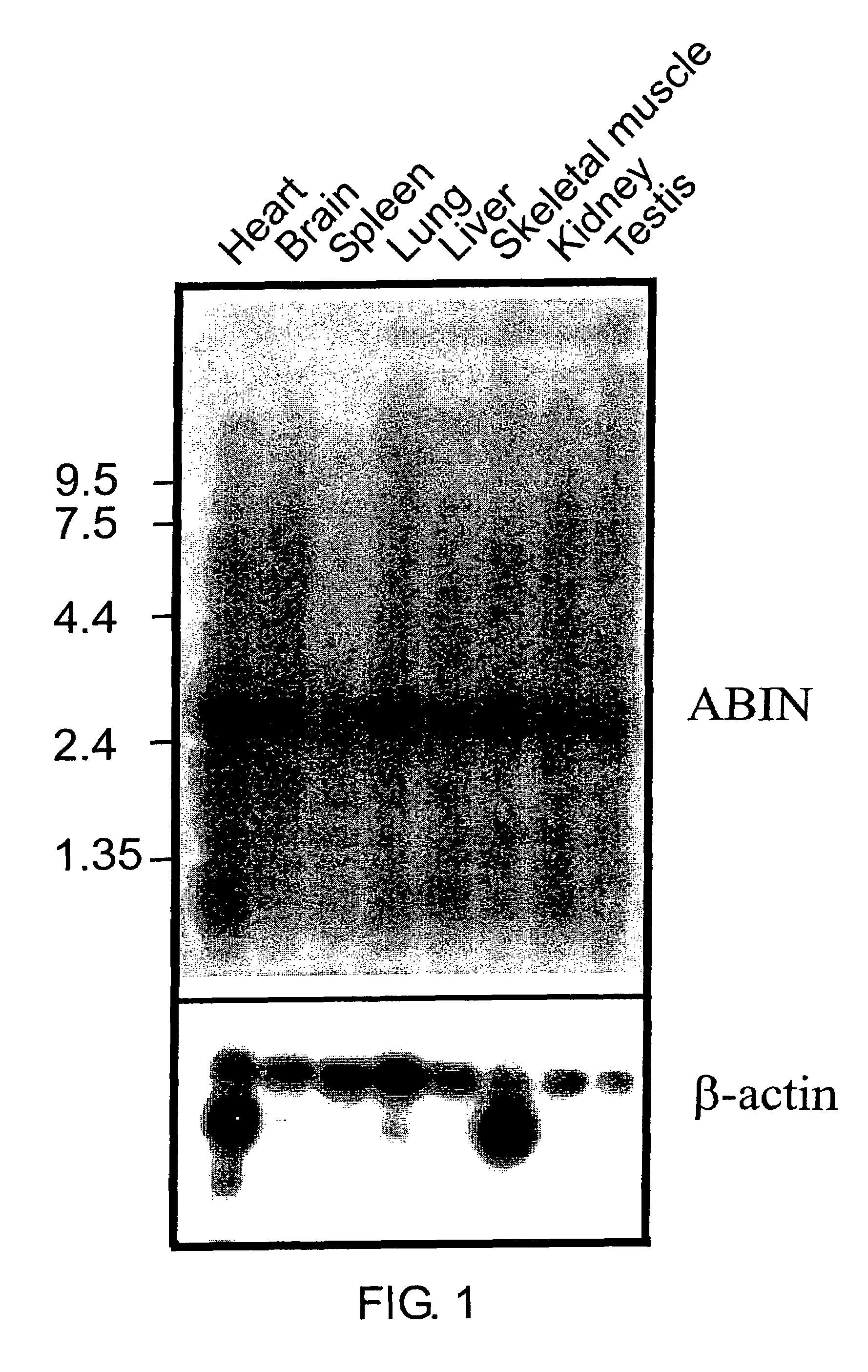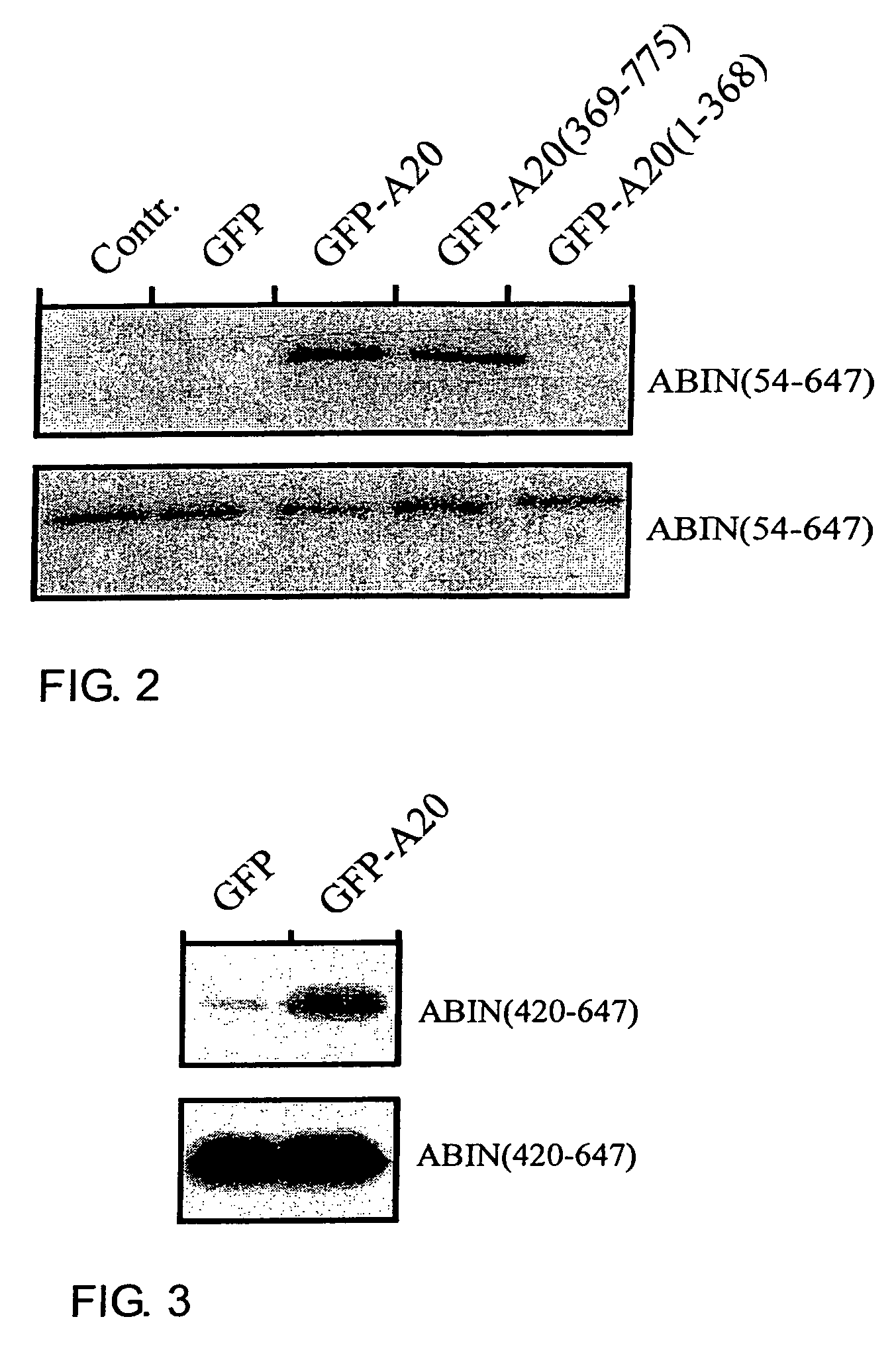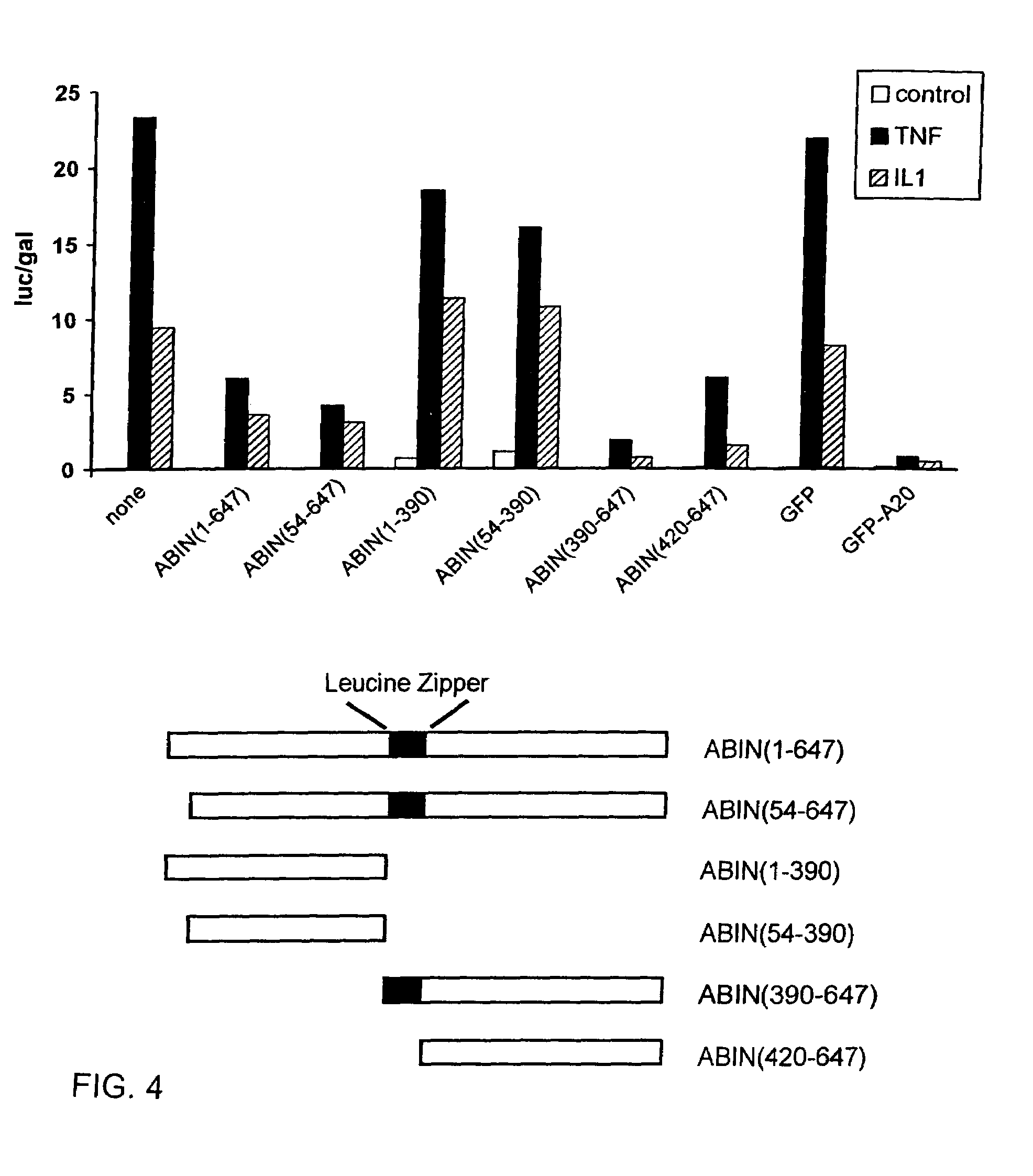Inhibitors of NF-kappaB activation
a nuclear factor kappab and activation inhibitor technology, applied in the field of biotechnology, can solve the problems of toxic compounds, relatively weak and unspecific antioxidants, and systemically given endocrinological and metabolic side effects,
- Summary
- Abstract
- Description
- Claims
- Application Information
AI Technical Summary
Benefits of technology
Problems solved by technology
Method used
Image
Examples
example 1
Isolation of the Novel Inhibitors
[0089]The novel inhibitors of the NF-κB pathway were isolated using a yeast two-hybrid assay, with protein A20 as bait. The yeast two-hybrid assay was purchased from Clontech Laboratories (Palo Alto, Calif.). The screening of an L929r2 cDNA library with pAS2-A20 was described previously (De Valck et al., 1997). Yeast colonies expressing interacting proteins were selected by growth on minimal media lacking Tryptophan, Leucine and Histidine, in the presence of 5 mM 3-amino-1,2,4-triazole and by screening for β-gal activity. Plasmid DNA was extracted from the positive colonies and the pGAD424 vectors encoding candidate A20 interacting proteins were recovered by electroporation in the E. coli strain HB101 and growth on media lacking Leucine.
[0090]From 1.3×106 transformants, 11 clones expressed A20 interacting proteins, including A20 itself (De Valck et al., 1996) and 14-3-3 proteins (De Valck et al., 1997). Three clones contained C-terminal fragments of ...
example 2
Expression Pattern of ABIN and ABIN2.
[0093]Northern blot analysis revealed that both ABIN and ABIN2 are expressed in all murine tissues tested (heart, brain, spleen, lung, liver, skeletal muscle, kidney, testis: see FIG. 1; only the data for ABIN are shown). ABIN is present as mRNA of approximately 2800 bp which is in accordance with the length of the cloned full length cDNA. In contrast to A20, ABIN mRNA is constitutively expressed in both TNF-sensitive and TNF-resistant subclones derived from the parental cell line L929s, irrespective of TNF stimulation.
[0094]ABIN2 is present as mRNA of approximately 2,000 bp, which is in accordance with the length of the cloned, full length cDNA.
example 3
Study of the Interaction of the ABIN and ABIN2 Proteins and Protein Fragments With A20.
[0095]Full length ABIN(1-647) and ABIN(54-647) were able to bind A20 in a yeast two hybrid assay, confirming the original interaction found with the 3 C-terminal fragments ABIN(390-599), ABIN(249-647) and ABIN(312-647). The latter contain the putative leucine zipper protein interaction motif (397-420).
[0096]Further analysis was carried out by co-immunoprecipitation. The eukaryotic plasmids for ABIN and its fragments as well as for ABIN2 were made by inserting the corresponding PCR fragment in frame with an N-terminal E-tag into the mammalian expression plasmid pCAGGS (Niwa et al., 1991). cDNA encoding mutant GFP(S65T) and a fusion protein of GFP(S65T) with murine A20 were also cloned in pCAGGS.
[0097]2×106 human embryonic kidney 293T cells were plated on 10-cm Petri dishes and transiently transfected with the suitable plasmids by calcium phosphate-DNA co-precipitation. 24 hours after transfection, ...
PUM
| Property | Measurement | Unit |
|---|---|---|
| Nucleic acid sequence | aaaaa | aaaaa |
| Interaction | aaaaa | aaaaa |
Abstract
Description
Claims
Application Information
 Login to View More
Login to View More - R&D
- Intellectual Property
- Life Sciences
- Materials
- Tech Scout
- Unparalleled Data Quality
- Higher Quality Content
- 60% Fewer Hallucinations
Browse by: Latest US Patents, China's latest patents, Technical Efficacy Thesaurus, Application Domain, Technology Topic, Popular Technical Reports.
© 2025 PatSnap. All rights reserved.Legal|Privacy policy|Modern Slavery Act Transparency Statement|Sitemap|About US| Contact US: help@patsnap.com



